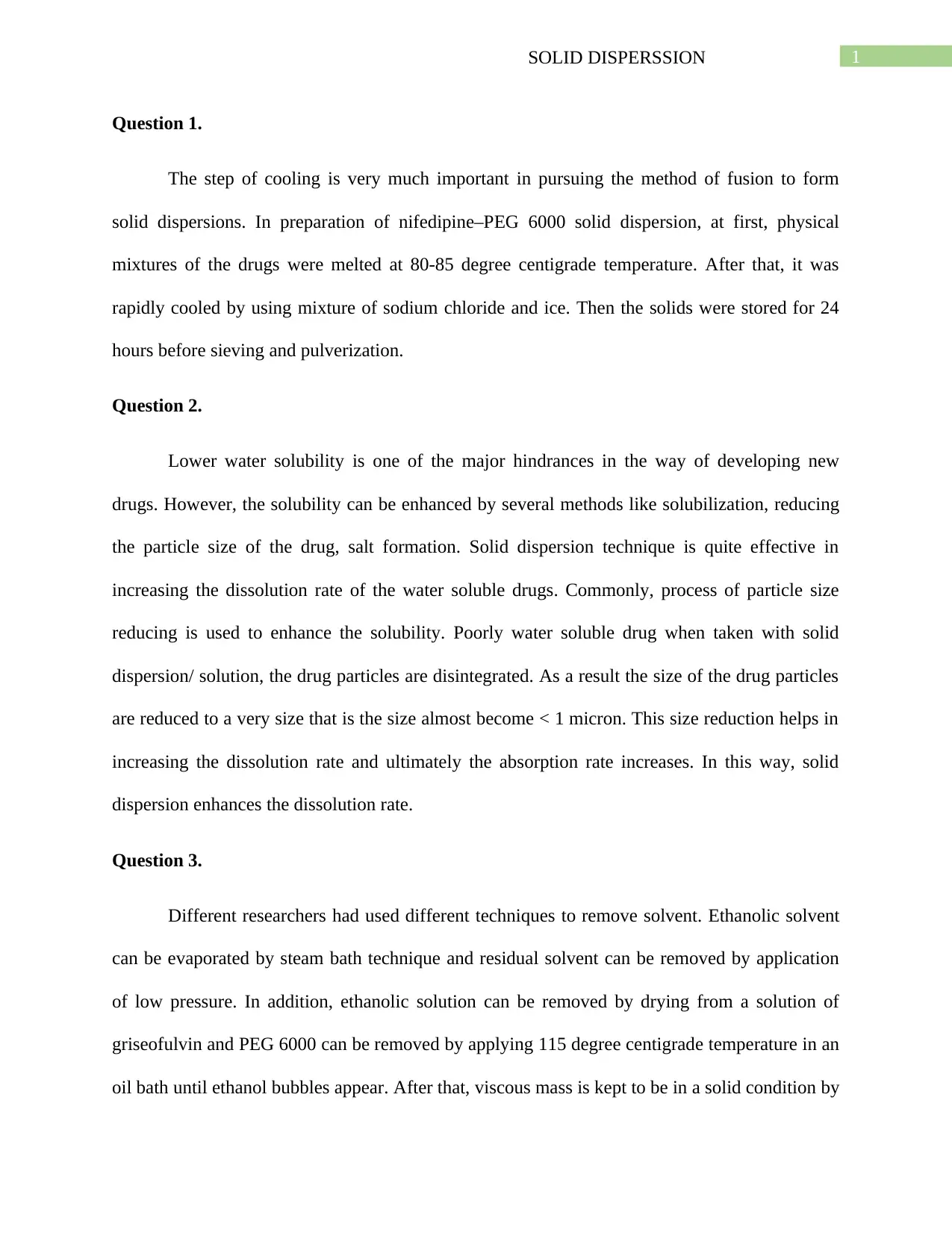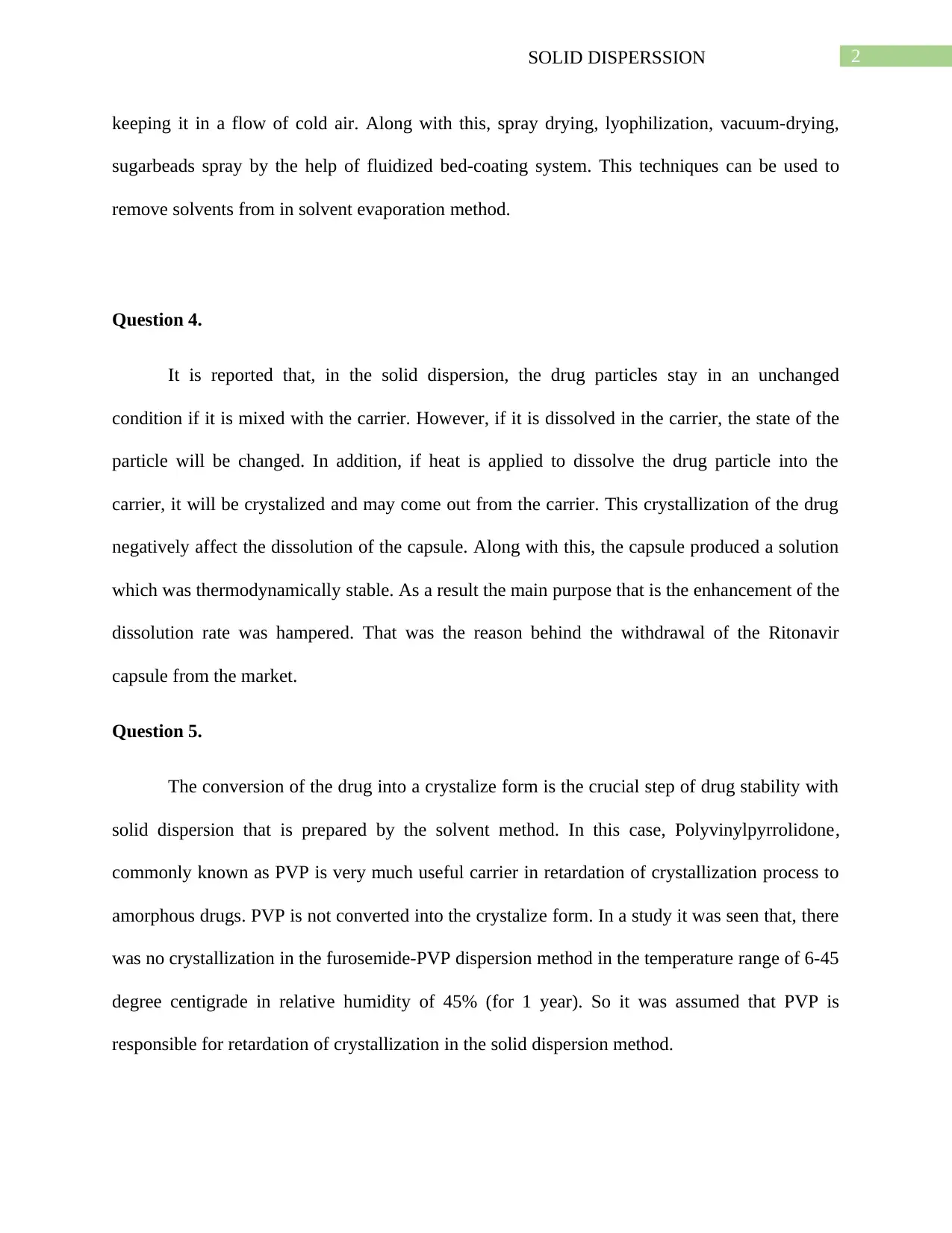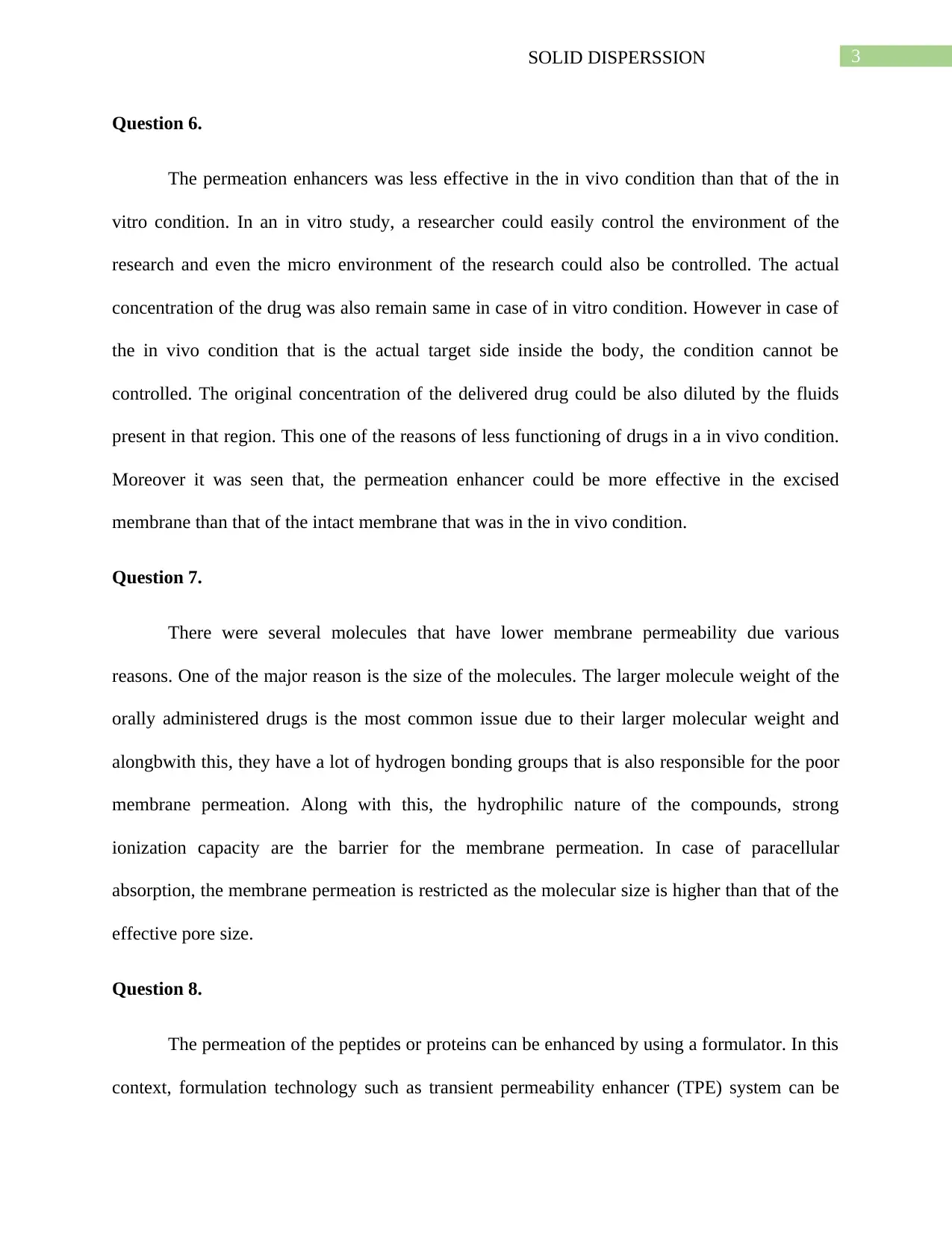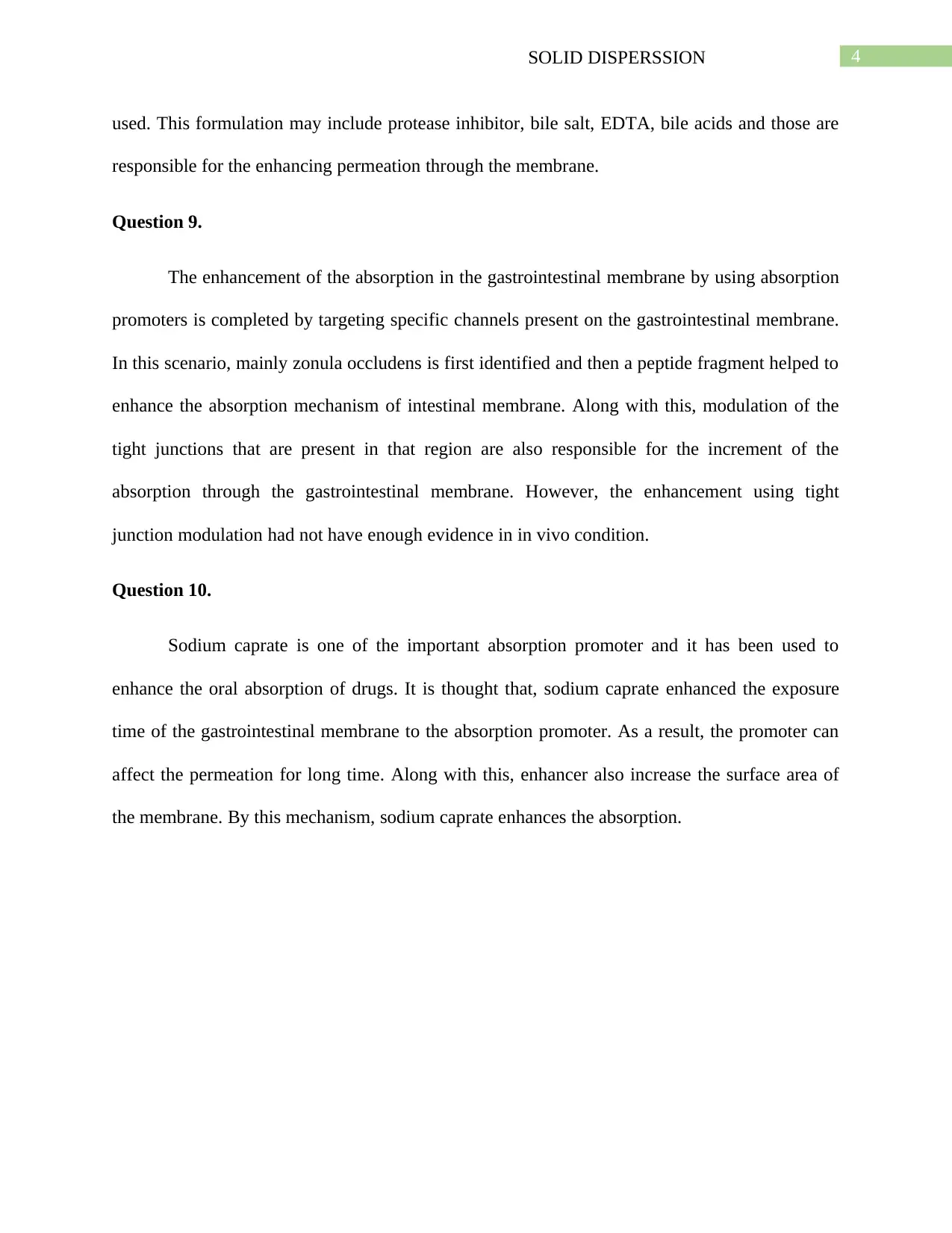Solid Dispersion: Techniques, Stability, and Permeation Enhancement
VerifiedAdded on 2023/05/30
|5
|1151
|445
Homework Assignment
AI Summary
This assignment delves into the realm of solid dispersion techniques, addressing key aspects such as the impact of cooling rates on system properties during fusion methods and how solid dispersion enhances the dissolution rate of poorly water-soluble drugs through particle size reduction. It explores various methods for solvent removal in the solvent evaporation technique, including steam bath application and spray drying. The assignment also discusses the reasons behind the withdrawal of Ritonavir capsules due to drug crystallization and its effect on dissolution, while highlighting the role of carriers like Polyvinylpyrrolidone (PVP) in retarding crystallization. Furthermore, it explains the differences in permeation enhancer effectiveness between in vitro and in vivo conditions, the reasons for low membrane permeability in certain compounds, and formulation strategies to improve the bioavailability of proteins and peptides using transient permeability enhancers (TPE). The mechanisms by which absorption promoters enhance absorption in the gastrointestinal membrane, targeting specific channels and tight junctions, are also discussed, along with the role of sodium caprate in enhancing oral absorption through increased exposure time and surface area. This comprehensive overview provides a detailed understanding of solid dispersion and its challenges.
1 out of 5






![[object Object]](/_next/static/media/star-bottom.7253800d.svg)